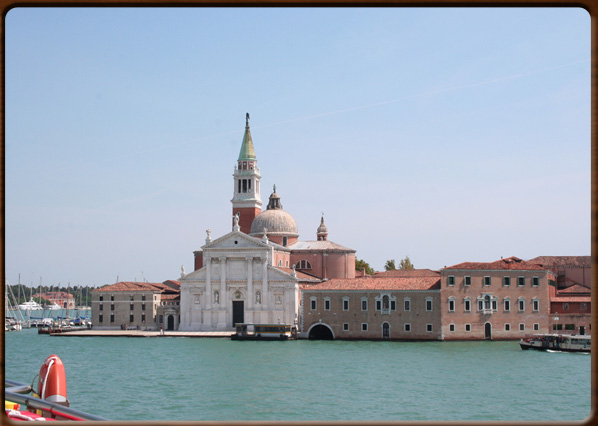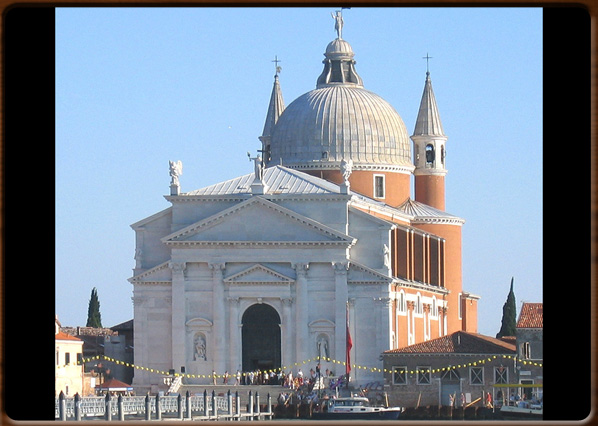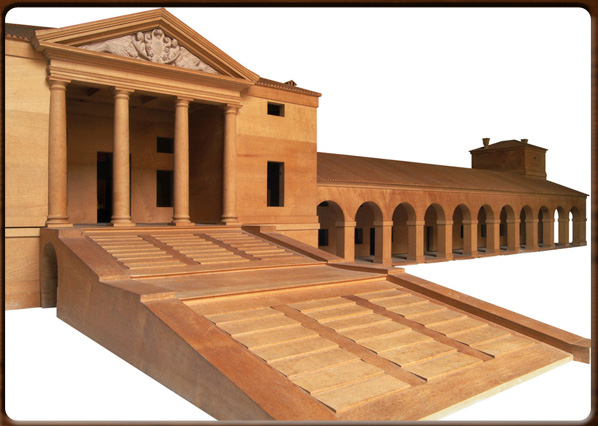
Basilica San Giorgio Maggiore

Chiesa del Redentore (of the Redimeer)

Villa Emo model



No video
Andrea di Pietro della Gondola, known as Palladio (Padua 1508 - Venice 1580), was – and still is - one of the most famous architects in world history.
Thanks to his clean classicism, combined with a sense for scenography leading to the Baroque style, he was especially sought-after in France and Britain, leading to a cultural phenomenon called Palladianism, the diffusion and study of his style.
Palladio travelled far and wide, thus helping develop his style, especially during a trip to Rome in 1551 when he ‘discovered’ the classic world.
His first major cause for fame came about in 1549 when he was commissioned with the reconstruction of the loggias in the Palazzo della Ragione in Vicenza (these had collapsed at the end of the 1400s) and the seat of the Public Courts in the same city.
He rapidly became the favourite architect for the aristocracy of Vicenza and thus gave the city a ‘facelift’, introducing the villa-temple model.
There followed many commissions for villas in the Veneto countryside: Villa Emo in Franzolo, Villa La Malcontenta near Mira, Villa Corsaro in Piombino Dese and Villa Barbaro in Maser are just a few examples of Palladio’s classic style.
Many of these villas are now UNESCO World Heritage Sites.
In the meantime, Palladio was awarded many prestigious contracts in Venice, to the point that he became the Serenissima’s official architect in 1570, upon the death of Sansovino.
Two masterpieces in Venice sum of Palladio’s skill: the Basilica of San Giorgio Maggiore (1566) on the island of the same name and the Church of Redentore (1576) in Giudecca.
His later works were mostly in the city of Vicenza, including Palazzo Valmarana, Palazzo Thiene and the Teatro Olimpico, which he never finished.
He passed on his know-how and learning in his famous treatise entitled I quattro libri dell’architettura, the first edition of which was published in Venice in 1570. An example of which is now held in the Metropolitan Museum of Art in New York.
1500 - - rev. 0.1.10